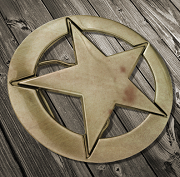|
Fungah! posted:D&D 4e There's a Paragon Path (a subclass you can take Levels 11-20 on top of your base class) that makes it so every time you teleport, you damage enemies adjacent to the square you left (a property known as Slashing Wake). It requires you to be a Warlock. It's semi-handy because, hey, free small amounts of damage, sure. There is a power you can take at level 10, Ethereal Sidestep, that lets you teleport one square as a move action, every turn (your base movement speed's going to be 5 or 6 squares, so on its face this isn't terribly handy). With the above, this means, oh, okay, lil' damage every turn for a baby move, whatever. Fey pact warlocks get a "pact boon," triggering on the death of an enemy you have designated as "cursed," that lets you teleport a small number of squares of squares. You can only curse the enemy nearest to you and it takes an action so it takes awhile to build up a bunch, and you only get the base bonus of curse (additional damage against that target) 1/turn, so, okay, this is mediocre so far. There's a feat you can take at paragon tier (so level 11+) to let you curse the 2 nearest enemies at once. There is an item called Rod of Corruption, that lets you forsake your pact boon trigger bonus to instead curse all enemies within 5 squares of the one that just died. There is a class of enemies known as minions in 4e. They have 1 hp, but don't take damage on attacks that miss them (so they're mooks that you plow through, typically, with area of effect attacks). Adding it all up, what you do is, you move to be next to 2 minions. Curse them. Use an attack that teleports you, or just use Ethereal Sidestep to move one square, ideally next to a minion you were not adjacent to prior. Slashing Wake kills both of them automatically. One of them gives you a fey pact boon teleport, the other Rod of Corrupts everything within 5 of you. FPB teleport takes you away from the guy you moved next to before (remember, with your initial Ethereal Sidestep?), and Slashing wake kills that guy, giving you another FPB teleport, which you will redeem upon arriving at your FIRST FPBTP's destination, next to another minion. If you can maneuver this to get next to two minions at once who are cursed, you can either get a double-up on your TPs or RoC burst again to give you a new field worth of people to harvest. In a minor and move action or two, as well as the resolution of a fuckload of free actions, you have now cleared the field of minions, dealt collateral, incidental damage to any non-minions next to them, annoyed the poo poo out of your DM and everyone else at the table, and, if you end on the right flourish, resolved it all by teleporting yourself a fair amount away. This is assuming you haven't taken ANOTHER paragon feat to give you access to another pact boon, and been banking those on your turn for something hilarious (my favorite being a floating +1 or +2 to apply to your next d20 roll (so, a skill check or attack roll, most likely), which stacks with itself and can be used at any time until the end of your next turn). The one time I used this in a combat, it was a hostage situation with a bunch of minion thugs clogging the halls of a monastery. My turn came up, I looked at the battlefield, and said: Minor, curse 2 next to me. Move: Ethereal Sidestep. Free: All minion enemies die. And that was the first and last time it worked. The eventual errata made Slashing Wake "the first time you teleport each turn" for variants of this particular combo. With the exception of Ethereal Sidestep, this was all material from the publication of the PHB1 at the very start of 4e's life cycle (and one of the racial powers you could get was a teleport-on-your-move anyway). It lasted awhile.
|
|
|
|

|
| # ? Apr 28, 2024 03:01 |
|
Chernobyl Peace Prize posted:Curse teleport shenanigans Semi-related was using Rod of Corruption along with Rod of Reaving with the Dual Implement Spellcaster feat. Rod of Reaving dealt damage equal to the rod's enhancement bonus (+1, +2, etc) to the target you cursed upon being cursed. This would obviously kill minions, and the devs apparently didn't mind that Warlocks could pick off the nearest minion without a roll every turn. What they did mind was Rod of Corruption letting them kill EVERY minion, assuming there was no gap between enemy entities over five squares, on the first turn as soon as they cursed. Rod of Reaving only damages nonminion creatures now.
|
|
|
|
Fungah! posted:Battlestar Galactica: Pegasus and strategic executions Splicer fucked around with this message at 12:55 on Mar 15, 2013 |
|
|
|
Splicer posted:Unless I am badly misunderstanding the execution rules, doesn't the player have a chance of coming back as a cylon? Only in the revised rules from Exodus (which created the new problem of degenerate 4 humans versus 1 cylon games). In Pegasus, any human who dies comes back as a guaranteed human. At least the Airlock is expensive to use if Treachery hasn't been handed out. What's particularly annoying is that a lot of crisis cards present the humans with a choice: suffer some major loss of resources or execute someone. Which, since execution is good for the humans, isn't a choice at all.
|
|
|
|
e: Nevermind, I have apparently been playing the Exodus rules wrong too!
Splicer fucked around with this message at 13:02 on Mar 15, 2013 |
|
|
|
e: nevermind also then. An actual weird rule: Exodus introduced Personal Goals, which were private agendas humans needed to complete in order to avoid losing resources. Depending on who happened to be dealt which Personal Goal, you could end up with some bizarre combinations; for example, nothing stops the President from receiving the "Brig the President" goal.
|
|
|
|
Previously, I mentioned the Diabolist prestige class in Pathfinder, and discussed how it wasn't much of a penalty to disallow resurrection, and it also allowed you to build a poo poo-kicking super imp companion. At any rate, that leaves us with the rest of its class features. Skipping around, one of its abilities is the ability to turn spells that deal energy damage (such as fire, cold, lightning, sonic, or acid) into spells that deal hellfire damage. This is interesting because under no circumstances does the game ever tell you what hellfire damage actually is. There are several possible definitions. The hellfire ray spell does it in the form of half the damage being fire damage while the other half is unholy damage that bypasses fire resistance and immunity. The infernal bloodline for sorcerers has it just as pure fire damage with Good creatures being shaken by the ability. There's also the hellfire hazard which functions like hellfire ray in that half the damage is fire and half the damage is unholy, except that unholy damage does no damage to evil creatures or creatures protected from evil, and double damage to good creatures. Aside from the sorcerer bloodline, all of these come from the same book. Augment Summoning is a fun feat for people who like to summon things, and is probably something someone taking this class would want anyways. It makes your summons stronger and tougher It's also the prerequisite for another feat that allows you to better zerg your opponents. You also gain the spell-like abilities to cast the aforementioned hellfire ray spell. In addition to doing questionable forms of damage, it has a "save or be damned" for anyone who gets killed by it, possibly making them harder to resurrect. Since the caster level check is based on the target's hit dice, it's oddly harder to resurrect the the target than the diabolist who cast the spell, and a late-game target with dozens of hit dice is almost impossible to bring back, except if restored by an evil caster. Due to the way the spell is phrased, there is no indication that being killed by the spell, failing your will save and being damned is required for the follow-up sentence of being difficult to return from the dead, and there is also no duration on the damnation either (it doesn't seem to wear off once you've been successfully raised). So you could scratch someone with the spell once and then they'd forever be harder to revive by non-evil casters. gently caress heroic characters, I guess. You also gain the ability to make two short-range or one long-range teleport a day. It's a thing, I suppose. But while the imp companion, Augment Summoning and maybe the spell-like abilities are generically useful, the other features of the prestige class have been clearly designed with certain characters in mind. To enter the class requires that a character successfully calls a devil and gets it to serve for a day. There are a few ways of doing this. One is by using the planar ally series of spells, employed by clerics, oracles and in some cases even a paladin (well, not for the summoning of devils, but you get the idea). As mentioned in the paladin write-up, the way planar ally works is that a divine caster phones home and the powers that be send a similarly-aligned outsider, who the divine caster then pays a certain amount based on the strength of the outsider and how long the outsider is to stick around. The fact that it's a divine spell and that such spells take on alignment aspects of the creature called means that divine casters can't summon things whose alignments are opposed to their deity/cause. Wizards don't play like that. Arcane casters like wizards, sorcerers, and summoners rely on planar binding for all their extraplanar calls. For planar binding, you start by creating a magic circle that opposes the alignment of the thing you're trying to call (or rather, is not aligned with the creature you're trying to call. True Neutral creatures are blocked by every form of magic circle). Then you can cast a planar binding spell and whistle up a creature. If it fails its will save, it shows up in your circle. Of course, you'd only do that if you weren't very good at being a wizard. Once called via planar binding, the outsider is free to test the circle with its spell resistance, teleport out or just shoot you with its ranged attacks/spells. And while the outsider can't directly attack the circle, it can convince others to mess with the lay-out and set it free. You probably won't hold your new friend for very long. Now, if you want to do this right, you first augment your magic circle with a diagram with a bunch of fun little symbols and sigils. This takes 10 minutes and requires a DC 20 Spellcraft check, and since you can take 10 for another 10 minutes of time, you should be able to hit this easily by the time you reach a level where you can cast planar binding in any form, though if you're recklessly casting from an earlier level with scrolls or something, you can still take 20, spending 200 minutes to make sure you get the circle right. This diagram prevents the creature from breaking out using its spell resistance, and prohibits its ranged attacks and spells from crossing the diagram. You can also cast dimensional anchor on the diagram before you start the binding spell to prevent the creature from using planar travel abilities for several days while it's held in the circle. The only way for the outsider to get out now is for someone else to disturb the (very delicate) circle, or for it to make a Charisma check, against a DC equal to 15 + your caster level + your Charisma modifier, and the DC is increased by a further 5 for the diagram, so 20 + caster level + your Charisma modifier. At the earliest you can normally cast lesser planar binding as a wizard, that's 29 + your Charisma modifier, and it only goes up. Since a Charisma check is a raw 1d20 + outsider's Charisma modifier, even if the outsider rolls a natural 20, it still has to have a Charisma modifier greater than yours + your level. This means it's almost impossible for the outsider to get out under its own power once it has failed its will save and been bound. So now that you've got an outsider, what do you with it? With planar ally, you pay a fair wage and then you're done with, but with planar binding you... negotiate. You do this by making an opposed Charisma check, with a bonus of up to +6 assigned to based on the task and reward. Note that there is nothing preventing you from offering a terrible bargain like "serve me or die", it's just that you won't get any additional bonus on the check (but also no penalty, unless the outsider gets a +6 bonus to its check). Though it does say that "impossible demands or unreasonable commands are never agreed to" but doesn't really define what "unreasonable" means. If you succeed, you just got a new employee. Fail and nothing happens, and you can make a check again the next day with either a different offer or the exact same offer, and can keep trying for up to a day per caster level. The only thing you have to worry about is rolling a natural 1, which lets the outsider break free. In order to increase your odds, you can do things like offering up sacrifices that intrigue the outsider... or you can just wear a nice hat. (One of the more interesting things about Pathfinder is that you have a headband slot which is separate from your head slot, and is the slot casters use for items that boost their mental stats and thus their casting abilities. A headband of superior intellect takes up the headband slot for a wizard, while a circlet of persuasion is described as a headband but takes up the head slot. Fighters and other physical-focus characters have no such luck, since their belts of physical stat boosting take up the same belt slot as other items. There is no "waist" slot. Many of the diabolist's other class features revolve around boosting the character's bonus to Charisma checks against devils, meaning that even a wizard with poor Charisma can still do well enough, while a Charisma-based arcane caster like the sorcerer or summoner can pretty much hold devils over the fire every time they want to strike up a deal, culminating in the PrC's capstone ability to add half your Bluff, Diplomacy or Intimidate modifier to Charisma-checks to bargain with devils you know, and since those skill checks are also Charisma based, you're making a check of something like 1d20 + your Charisma modifier + 6 + (your level + your charisma modifier + feat + item bonuses)/2 + misc bonuses against 1d20 + devil's charisma modifier + misc bonuses, making it incredibly likely that you'll be able to cow even the strongest pit fiend. Of course, this class is also open to anyone who can cast planar ally, which doesn't make any Charisma checks whatsoever, making the capstone pretty much useless. The only real benefit is the Infernal Bargain ability at level 2, which lets you make an opposed Charisma check to halve the price, which is boosted by your Infernal Charisma bonus to Charisma checks against devils, but might not work with the capstone ability. Now, that's not to say that divine casters can't cast planar binding. The Outer Rifts oracle adds the spells to the oracle's spell list, and a cleric with the devil domain can use planar binding to call devils only. It would be a good fit if only it worked. Planar binding requires the caster to trap the subject with an appropriate magic circle, so to bind an evil outsider like a devil would require the cleric to use a magic circle against evil. Unfortunately, since the spell protects against evil creatures, that makes it a Good spell, and clerics can't cast spells with alignment descriptors opposed to their deities. A cleric of Asmodeus could cast magic circle against good (an evil spell) or magic circle against chaos (a lawful spell), but not one of the other two. Even if the "devils only" restriction was removed, and your character thought it would be delightful to use planar binding to shackle an angel into service of Asmodeus, you couldn't do it, because casting planar binding to summon a creature with an alignment subtype gives the spell that alignment descriptor. Binding an angel makes it a good spell, so a cleric of Asmodeus couldn't cast it. The only thing a cleric could successfully bind would be true neutral outsiders, and the spell doesn't allow for that. It's completely worthless (barring some sort of cleric who doesn't have a deity). Oracles don't have the same restriction on aligned spells, unlike clerics and inquisitors (and paladins, so that aforementioned angel summoner could hypothetically call up some devils to go evil-hunting, though with the paladin's code of conduct that would be a serious can of worms). Wizards still don't give a gently caress about such petty things like morality, and are free to learn and cast magic circles and conjuration spells no matter the alignment. The alignment restriction on clerics means that they can only summon things that are ideologically aligned with their deities. Since a wizard gives no fucks whatsoever, there is nothing stopping a Lawful Evil wizard from using summon monster IX to summoning an angel or archon and then pointing it at an orphanage or nunnery and telling it to go wild. So an evil cleric can only summon fiends, but an evil wizard can make angels eat babies. The one other thing the diabolist gets is a bonus to researching the True Names of devils. Now, True Names are a feature of most outsiders, and knowledge of them makes it easier for you to call on an outsider, giving it a -5 penalty to its will save to resist being called, and a -5 penalty on checks to get out of the circle if its true name has been inscribed there. You can discover an outsider's true name with a month-long research session in a library or a quest to old ruins and the like, followed by making a Knowledge (the planes) check based on the outsider's number of hit dice. Or you can just be a wizard. Wizards can take the True Name feat, which allows them to instantly know the name of one outsider, letting them call it up once per day as if using planar binding, only they get to make it work for free. You can also be a dick and mispronounce the name to cause the creature real physical pain. Every time you take the feat, you learn a new true name. The feat exists at a weird intersection between mechanics and plot, since it states that outsider works for you out of fear that its true name would be revealed, and may conspire to make you forget the true name or swear to never use it again. So if one of those situations happens or if the outsider dies, what becomes of your feat? What happens if you share the true name? What happens if you learn a different true name normally? What happens if you lose your memory but you wrote it down somewhere else? So let's learn the poo poo out of some true names. Now, you might think that a diabolist would be good at learning true names, but if you really want to do some heavy learning, you're going to want to ace some Knowledge (the planes) checks, and for that you'll need a bard. A bard has two things of interest- Bardic Knowledge, which lets you add half your bard level to knowledge checks, and Lore Master, which lets you take 10 or even 20 on knowledge checks as a standard action. Now, you could then pump your Intelligence score to make your Knowledge checks better, but you can do better than that by taking a level of oracle and going for the lore mysteries, of which the Lore Keeper ability lets you use your Charisma modifier instead of your Intelligence modifier for knowledge checks, since "you learn most of your information through tales, songs, and poems" (with some weird implications since you're researching true names). Since you're Charisma-based, feel free to be a gnome, and take the Academic gnome trait to get +2 racial bonus to a Knowledge check of your choice, and maybe take a trait and a few feats to boost your knowledge (the planes) skill further. Now, how high can you stack your Charisma? Well, you can point buy your way to an 18, then add +2 from being a gnome, +5 from boosting your Charisma over 20 levels, and a +6 enhancement bonus from an item, and +1 to +3 from being middle age through venerable. If you want to blow the bank, you can also add a +5 inherent bonus from wishes or similar features, and a +2 profane bonus from contracting with the succubus I mentioned back in the antipaladin write-up. So 32 through 41, or a +11 to +15 bonus. Let's stick with the lowball estimate for the moment. Next, you stick a mask over your face, rendering you blind, but granting you a +10 competence bonus to knowledge checks. Then you cast one of your bard or oracle spells for an insight bonus to the knowledge check. Then pick up a luck bonus from a stone. 1d20 + 20 (ranks) + 3 (class skill) + 11 (Charisma) + 9 (bardic knowledge) + 10 (mask) + 8 (spell insight) + 12 (feats) + 2 (trait) + 2 (racial) + 1 (luck) =1d20+78 Take 10 for a check result of 88. This is a low estimate. Now, the DC is 10 + target's hit dice, with an optional bonus to the DC of up to +10 for things that are especially powerful and well-hidden. Assuming the + 10 is always in play, the bard can learn the True Name of any outsider with 68 hit dice. In the Pathfinder game, the only listed outsiders have 40 hit dice or fewer, so let's get theoretical. The SRD that Pathfinder is based on also includes Deities & Demigods, which lists the rules for statting up your favorite deities. Most of them have 20 hit dice of outsider plus some amount of class levels. Greater deities like Zeus tend to have 20 hit dice, then 50 or so levels for a total of 70, putting them just out of our reach. Now, you could boost the bard's Charisma modifier through inherent bonuses, age bonuses, or profane bonuses from a succubus, or you could try something else. Recall Eldritch Heritage, which allows a character with the Charisma to spare to pick up sorcerer bloodline abilities. The Arcane Bloodline gives the bard an arcane bond like a wizard, which you can use to pick up a familiar. Familiars have all the skill ranks that their masters have, which means they can use the Aid Another action to make a DC 10 check and add +2 to any of your skill rolls. Multiclassing into Infernal Binder gives a familiar and also +3 to Knowledge (the planes), though the familiar won't improve on its own. (Also, you can have a giant isopod as a familiar). With the aid of a pet raven, you now know the True Name of Odin. There is nothing in the world that can hide its true name from you, and nothing that says you have to hide the true name from the world. Share it with your friends, write it on bathroom walls, do whatever you want with it and piss off dangerous beings in the process. Admittedly, greater planar binding caps out at 18 hit dice, so there's not a whole lot of direct mechanical use to knowing the true name of a deity or archfiend. Of course, there's the problem of researching true names requiring you to spend your time inside of a library or on a quest for a month, which sort of cuts into your adventure time. But why let that slow you down? The text for the Mask of a Thousand Tomes implies that it's got a library of a thousand tomes stored in it, and even if your DM won't let that fly, there's nothing that says that your research has to be conducted in a big library, or even a valid one, so you can carry around a bag of holding full of your library of Elminister fanfiction and research true names in there. With the right items, you won't have to eat or drink, age at all, sleep much or even breathe, and you can get some for your little familiar buddy as well. Since you're a bard and not really a combatant, you can hang out in the bag of holding all day, just studying away. If your party needs you, they can open the bag and you can sing some songs or maybe even stick your head out for a few seconds to cast a spell before going back to your research. If your party doesn't need you, then you've got a scenario where once a month they gather around a mysterious bag, which parts open to reveal the head of a middle-aged gnome with a mask of paper and several shiny rocks floating in orbit. A raven caws, and the gnome speaks but a single name of terrible power, before vanishing back into the bag for another month. And then the wizard takes the name and uses it to enslave the powers of creation. Because wizards don't give a gently caress. (Technically, you could just send the raven up to deliver your message for you and basically never see the outside again). The diabolist doesn't really have a unique trick outside of big impin', since the rest of its mechanics can be used with a wider variety of creatures than just devils, and often can be used better by a character build dedicated to it. But the general mechanics are still potent enough to prove one thing: Wizards are loving assholes.
|
|
|
|
LightWarden posted:
Well you know what they say. Impin' ain't easy. 
|
|
|
|
Bag-living Gnome Devilmaster is my next villain.
|
|
|
|
At the end of the campaign the PCs find out he's been hiding in their bag of holding all along! GMed by M. Night Shyamalan.
|
|
|
Chamale posted:If you were standing on an Earth-like planet, an object the mass of Jupiter would be the local centre of gravity, not Earth. Does D&D model reality as an infinite plane with a steady downwards pull? In some cases yes, I'd imagine, if you're on the outer planes.
|
|
|
|
|
Our DM has explicitly stated that the game world is flat after I asked too many questions on how immovable rods work in relation to a constantly rotating planet.
|
|
|
|
YggiDee posted:Our DM has explicitly stated that the game world is flat after I asked too many questions on how immovable rods work in relation to a constantly rotating planet. Your mission is now to kill the turtle the world is on.
|
|
|
|
YggiDee posted:Our DM has explicitly stated that the game world is flat after I asked too many questions on how immovable rods work in relation to a constantly rotating planet. Answer A) It's a game, who gives a poo poo just read what it does. Answer B) It's magic, i don't have to explain poo poo. Answer C) It's magic, it doesn't run on your physics. Answer D) The immovable rods magic works by locking onto the planets gravity well and holding it in place in comparison, it's called an immovable rod because it's de facto immovable on a human scale.
|
|
|
|
YggiDee posted:Our DM has explicitly stated that the game world is flat after I asked too many questions on how immovable rods work in relation to a constantly rotating planet. WhitemageofDOOM posted:Answer A) It's a game, who gives a poo poo just read what it does.
|
|
|
|
No, taking into account Heisenberg's Uncertainty Principle, the likely explanation is that on use, the universe immediately adjusts so that all objects are now moving relative to the rod. It's a fairly common magic item that changes the center of the universe, is all. The trouble starts when you use more than one.
|
|
|
|
The rod locks to an inertial reference frame, but the magic isn't perfect and the rod is partially susceptible to gravity (and only gravity). By coincidence, it is just susceptible enough to stay in a geosynchronous orbit at approximately ground level on a standard Earth-like planet.
|
|
|
|
It's really just a plain old metal rod, but everyone who has been seen using it up to now is actually a very good mime.
|
|
|
|
Rexides posted:It's really just a plain old metal rod, but everyone who has been seen using it up to now is actually a very good mime. This is the best explanation, because it implies that Mimes are some secret superwizards who can manipulate stuff at great distances, but hide form the world by pretending to be unpopular street performers.
|
|
|
|
It's actually a rod that possesses the ability to develop a resistance to any force being applied to it that causes it to appear mobile.
|
|
|
|
Immovable rods are actually fragments of the Spire, in the center of the Outlands, and thus the entire multiverse; their apparent immovability is a result of the widespread consensus that they are always at the center of the universe, regardless of their position. The button converts it from Spire-material to whatever else it is made of, thus de-centering it and generating a moderate transmutation aura.
|
|
|
|
They make nerds' heads explode.
|
|
|
|
If we knew how they worked we'd be wizards, now wouldn't we? Let's talk a little about Sorcerers and Wizards in 3.5. More than we do, that is. There's a certain kind of design logic to these two spellcasting classes. One of them has much less ability to learn spells, but in return can cast far more of whatever spells they know without deciding what spell they want to prepare ahead of time; that'd be the sorcerer. The wizard on the other hand needs to prepare the exact spells they want, but get a much wider variety of potential spell knowledge. They also get higher level (read: better) spells faster than the Sorcerer will. This is how the two classes are designed to be balanced. Ahaha. Yeah. First, let's take away the Sorcerer's flexibility. The advantage there is that the Sorcerer can supposedly decide in the middle of an adventure to cast whatever they want. The problem with this advantage is that the Wizard has it too. quote:Spell Preparation Time So a Wizard can in fact leave some of their spell slots empty and take a breather whenever is convenient. The difference between one minute and fifteen is pretty laughable in the vast majority of adventures. Okay, but that still leaves the Sorcerer with more spells per day, right? Aha, not for long. First, be a Specialist Wizard. A Specialist can't cast spells from two schools of magic (i.e. they get less of a wide pool of knowledge) but get more spells to cast every level. The Wizard will still have a much larger variety of spells than the Sorcerer even with this choice. Now for the sake of this example, let's look at two third-level characters, minus bonuses for having high stats for the sake of simplicity. code:Yeah, really. The Sorcerer's "Advantage" is a difference of one spell, and they don't get as good a selection to choose from OR as powerful spells as early. But we can do one better. Now at level four, the sorcerer will pull ahead again, as so: code:Let's overtake the Sorcerer completely. There is a class of items which only preparing casters can use (i.e. not Sorcerers because gently caress Sorcerers I guess) called Pearls of Power. For ever level of spells minus level 0, you can use a Pearl of Power once per day to regain a spell you already cast. That's effectively +1 spell per level. You can trivially make them at ever level they matter as a Wizard with a single feat, Craft Wondrous Item. The first one is so cheap to make you can almost make it with your starting gold! So let's take our specialist wizard who crafts a pearl of power for ever spell level at the earliest opportunity and pit them against an equal level sorcerer and see who has more spell power. Level 3: code:code:code:So if you want to be a worse wizard who knows less and gets good spells slower but sort of has more spells 50% of the time, do play a Sorcerer! At least you can freely mix metamagic into your spells and Wizards can'tahahahaha no Wizards have a Wizard-only set of items for that too which are even better. Rulebook Heavily fucked around with this message at 17:22 on Mar 17, 2013 |
|
|
|
How does this happen? I never played D&D before 4E, and I know 4E is far from perfect. But how can that be allowed to happen? Some people claim balance doesn't matter, and that's a different issue altogether, but there are still people out there who claim 3E is balanced. It genuinely befuddles me that anyone can look at something like the example above and go "yep, looks reasonable. The sorcerer is a Wizard but with change Y. A Wizard is a sorcerer but with change X, oh and fairly easily Y as well. Are there any other examples of this sort of thing between classes? Do druids outshine rangers in a similar manner? Can clerics do paladin+?
|
|
|
|
quote:Can clerics do paladin+? Anything paladins or fighters can do, clerics can do much, much better.
|
|
|
|
Rangers have a worthless animal sidekick, a limited choice of free feats, lower HP then warriors, and some meager unique abilities that can be copied by spells and items. Druids get to play as Two solid stone acid coated superdinosaurs that can move a million miles an hour and attack six times a round, with a full range of magic for healing, damage, and doing whatever the hell else they want to. Casters in 3.5 are laughably more powerful then non-casters. However the gulfs in power between each caster, such as Wizard and Sorcerer up there, is effectively meaningless. Both of them are all-powerful, but Wizards are more all-powerfuler faster.
|
|
|
|
Captain_Indigo posted:Are there any other examples of this sort of thing between classes? Do druids outshine rangers in a similar manner? Can clerics do paladin+? Yeah, but that's more because druids and cleric are pure casters, and rangers and paladins are hybrids. Their physical prowess is supposed to offset their weaker casting, but the casters can just use spells to trump them anyway (or alternatively just turn into a bear. Druids are mega overpowered).
|
|
|
|
While we're on this subject, have a thing by forum poster OKShark.quote:Consider the 8th level druid. Now, an 8th level druid can do many things, like cast spells or shapeshift, but they also get an animal companion. At 8th level, their animal companion is likely to be a brown bear. Now, a Brown Bear gets 3 attacks a round, is Large (he gets free attacks whenever anyone moves up to him), has a 27 strength, and can make grapple checks as a free action whenever it hits you. An 8th level fighter, for comparison, can only make 2 attacks a round, although he probably has better accuracy and AC and he should have more tricks to use than a bear.
|
|
|
|
AlphaDog posted:This is the best explanation, because it implies that Mimes are some secret superwizards who can manipulate stuff at great distances, but hide form the world by pretending to be unpopular street performers. According to Pathfinder, they are!
|
|
|
|
Captain_Indigo posted:Are there any other examples of this sort of thing between classes? Do druids outshine rangers in a similar manner? Can clerics do paladin+? Yes, absolutely. There's a reason 3.x is caster supremacy edition. How it happens is pretty simple but is best left for grogs.txt.
|
|
|
|
ProfessorProf posted:Anything Cleric domains just got broken as things went on. First lets cover the fact that evil clerics, or at least clerics that worship demons, are just better at fighting than fighters are. They get, among other things a Level One Wizard style save or die and an auto crit. Some of the paths that start out weak for demon worship get laughably strong at their end. But yeah, War and Fury Clerics are way better at fighting than Fighters, despite the fact that they cant use as good weapons (PSYCHE yes they can, cuz domains cover that as well!). They get retarded good buffs and can also heal. The all Cleric all the time party is pretty much how you stack the best low level D&D groups for 3.5. How half a dozen random clerics of different gods who dont get along somehow ended up together is your DMs problem, but if you dont know what to bring to a 3.5 game the answer is always cleric because they can do anything. At high levels this becomes extremely literal with the domains of Demons and Travel.
|
|
|
|
El Estrago Bonito posted:Cleric domains just got broken as things went on. First lets cover the fact that evil clerics, or at least clerics that worship demons, are just better at fighting than fighters are. They get, among other things a Level One Wizard style save or die and an auto crit. Some of the paths that start out weak for demon worship get laughably strong at their end. But yeah, War and Fury Clerics are way better at fighting than Fighters, despite the fact that they cant use as good weapons (PSYCHE yes they can, cuz domains cover that as well!). They get retarded good buffs and can also heal. The all Cleric all the time party is pretty much how you stack the best low level D&D groups for 3.5. How half a dozen random clerics of different gods who dont get along somehow ended up together is your DMs problem, but if you dont know what to bring to a 3.5 game the answer is always cleric because they can do anything. At high levels this becomes extremely literal with the domains of Demons and Travel. Now now, you also want a druid (so you get an extra better-than-fighter fighter along with your spellcaster/fighter/tank/Optimus Primal) and a wizard or bard (see other people's posts on why you may want one around for later on). But yeah, there's generally a reason why you saw -zilla after refrencing Cleric or Druid usually in 3.X.
|
|
|
|
Rulebook Heavily posted:Let's talk a little about Sorcerers and Wizards in 3.5. More than we do, that is. And it gets better than that when you play Pathfinder. There's a new collection of Wizard-only feats called discoveries that wizards can take with their own feats or their one bonus feat every five levels. One of them is Fast Study, which allows the wizard to prepare all spells within 15 minutes instead of an hour, with the minimum prep time being 1 minute instead of 15. And while banning opposition schools meant you couldn't use those spells ever in 3e, Pathfinder wizards find that sort of thing to be annoying. Opposition school spells can be learned as normal and merely require two spell slots instead of one to prepare, plus you take a -4 penalty to checks made to create items that have an opposition spell as a prereq. Of course, if even that slap on the wrist is too much, a level 9 wizard can take Opposition Research as a feat to go from two opposing schools to just one. Now, if you want even more spells than you get from being a specialist wizard, take a look at your arcane bond. The familiar has already been mentioned as a floating source of aid another bonuses, plus the ability to carry spells and even use magic items like wands if your familiar has the appropriate appendages, but your arcane bond isn't limited to just familiars. You can instead choose to have a bond with an item, which allows you to enchant the item as though you had the appropriate feat, and also once per day lets you cast any spell you know without expending a slot or even preparing it. The downside is that when you don't have the item on-hand you have to make an annoying concentration check or lose the spell when you cast. While annoying if your item is a weapon, wand or staff prone to getting smashed or dropped in a fight, if your item is something like an amulet or ring it can be incredibly difficult to remove, especially if your ring is enchanted so that it can't be removed without cutting off your finger. If you worry about pick-pockets shaking your hand, get a meridian belt, which allows you to wear rings on your feet (and while you can wear four rings, you can only have two active at a time). If you bond with an amulet, you can get one that lets you cast even more spells per day. (Also, your wizard can use a pirate hook hand and still cast spells and deliver touch attacks.) Should you wish to have some form of the sorcerer's ability to spam the same spell even if you didn't prepare enough copies, simply buy or build a few Pearls of Power, which allows you to recall any spell of a particular level based on the item that you prepared and then cast that day. You don't even have to use it to recover spells you think you might need, you can simply think "well, I cast my last copy of fly a few hours ago and here's a cliff I need to bypass. Order up!" Build them yourself and you can have a pretty pile of trinkets that you can keep in your back pocket for the low cost of 1000 gp multiplied by the square of the spell level. The Runestone of Power has a similar function for spontaneous casters, but costs twice as much. So then there's the whole thing with the wizard's spellbook, which the wizard needs to prepare spells each day. Furthermore, each spell takes up 1 page per spell level, and scribing new spells outside of the free ones you get at each level costs 100 gp per page, which can add up. Fortunately, there's the Blessed Book, which is not only waterproof and locked (and can be magically locked to keep people other than you out), but can hold 1000 pages worth of spells for you and doesn't cost anything more when you do it. That's some big savings right there, and if you just spaced it out evenly you could store 18 spells per level of spell you could cast, more than enough for any wizard's needs. But what if that wasn't enough for you? What would it take to store the knowledge of every spell? Well, taking the list from the SRD and dumping it into Excel gives us the following spell counts: 0th- 28 1st- 99 2nd- 134 3rd- 114 4th- 94 5th- 87 6th- 75 7th- 66 8th- 48 9th- 45 Totaling it up gives us... .5*28+1*99+2*134+3*114+4*94+5*87+6*75+7*66+8*48+9*45= 3235 pages worth of magic. A little over three blessed books, so let's just call it four to give us room for the spells Paizo or the SRD hasn't had time to write in. This means that the Encyclopedia Magicka is a four volume set, though admittedly it'd take over a year working in 8 hour shifts to write them all down. And someone with a spellbook can take a feat to halve it even further, down to a two volume set and a sixth of the time, finishing up transcribing in a month or two. Or possibly even faster. Two to four volumes of absolute power are fine and dandy, but that just means it takes fewer thefts to leave you with nothing. Well, for starters, fewer volumes means that there are fewer things you need to spend money on to trap the poo poo out of them. Spells that do area damage are probably a poor idea, but if you can somehow cast or find someone who can cast something like greater glyph of warding (such as by binding an outsider), you can attach some nice spells such as a geas along the lines of "give me back my book, you rear end in a top hat." There are also fun magical traps you can put into the text such as sepia snake sigil which forces anyone who reads it to make a Reflex saving throw or be magically trapped for several days (and if you're willing to get creative, note that the spell works based on reading and line of sight/effect, so you can cast this thing on a banner and someone else can trigger it just by reading it, even from a distance using a telescope. Just make sure no one else reads it before the target). At any rate, the good thing about spellbooks is that you only need them when you're preparing spells, which can be only a few minutes a day if you have the right feat. So when you're not using them, you can store them someplace safe, like maybe your bag of holding or portable hole, or maybe a paradox box which you store in a bag of holding in order to prevent people from getting at your encyclopedia collection (extradimensional spaces cease functioning when stored inside other extradimensional spaces, but that's not a huge burden in this case, it just means you need to pull your box out of storage when you need to open it). But that might not be good enough for you. A glove of storing can store one object as a free action, shrinking it down and hiding it inside the glove. Sadly, you can only store one item, and your encyclopedia set might count as more than one for its purpose, even if you bind them together with a belt or something. And you can't wear more than one glove of storing at a time. The good news is that you don't have to be wearing the gloves in order for them to function, or you can split up the gloves among different people so that you hold one volume and then your monkey or imp familiar holds another. If shrink item is used on a book, it shrinks to 1/16th of its normal dimensions, reduced from a book 12 inches tall, 8 inches wide and 1 inch thick to 3/4ths of an inch tall, 1/2 an inch wide and 1/16th of an inch thick, making it something that could comfortably sit on a quarter or d20, and shrink item can be used to make the item have a cloth-like consistency to make it more malleable. Shrink item can even be made permanent, so the caster can grow or shrink the item as needed or desired. Only one problem: shrink item specifically shrinks one non-magical item, and a set of magical encyclopedias is neither. Fortunately, there is a way to bypass that. A security belt not only makes it harder to steal things from you, but can once per day shrink an item down as the shrink item spell. Since the wording is "as the shrink item spell" and not "cast shrink item", it means that it uses the shrink item effect while superseding the spell's restriction (size limit, nonmagical) with its own (just the size limit). The intent seems to be that you shrink things down and put them in the belt, but the rules don't specifically mention anything further, so there's nothing stopping you from shrinking an item and then doing what you wish. Since it's a once-per-day power you're going to need multiple belts (and someone else like a familiar to wear some of them if you don't want to take yours off because you like the long-term effects of your own belt), but you can shrink down every encyclopedia volume you have (though sadly, since it doesn't cast the spell, you can't make it permanent, so they only last up to five days or so). It's probably easier and cheaper to just have your DM let you shrink magical items or wait for a book to come up with a spell that does so, but you do what you have to. You now have several tiny cloth swatches containing the sum total of every spell known to wizards. Now, if you don't want to lose them, you keep them with you, then think like a four-year old and stash them some place no pickpockets whatsoever are going to put their hands. This is not as terrible of an idea as it sounds. 1) A blessed book is waterproof and presumably resilient to other things as well. 2) Prestidigitation is a spell that does many minor things among which is clean a cubic foot of items per round. It's also a spell any wizard can cast and as a cantrip it can be cast at-will. 3) There are numerous items that sustain a creature with no need for food or drink, among which is the ring of sustenance, favored by casters since it also allows them to refresh their spells after only two hours of rest. If you do not need to eat or drink, your systems are probably relatively... inert. Your DM is unable to get to your spellbooks without bad-touching your wizard. If you require further security, invest in a chastity belt with an arcane lock, requiring thieves to spend several turns clearing the way. You can even make them spend turns checking for traps. Should the spell expire or be dismissed, things become... interesting. Rules for shrinking and enlarging creatures imply that you can't use them to explode your way out of things or kill creatures through growth. And it is highly unlikely that casters will have line of effect to your spellbooks unless you're playing some very interesting games. Watch out for antimagic fields though. If you don't want to deal with shrink item, recall that a portable hole is a 6 foot diameter, 10 foot deep hole that can be folded up into a swatch of cloth the size of a pocket handkerchief of negligible weight, and when folded up has a cloth-like consistency, making it useful for storing things close to your person.
|
|
|
|
D&D never stops giving me interesting things to do with my rear end in a top hat.
|
|
|
|
Kasonic posted:D&D never stops giving me interesting things to do with my rear end in a top hat. I can't help but feel like this whole "shove the entirety of magical knowledge up your own rear end" is going to end up in the bad experiences thread sometime down the line.
|
|
|
|
Kasonic posted:D&D never stops giving me interesting things to do with my rear end in a top hat. Someone care to explain the Asssplodeomancer?
|
|
|
Ratoslov posted:Someone care to explain the Asssplodeomancer? This? quote:Arseplomancer I mean, it's just an extension of the jumplomancer! 
|
|
|
|
|
This is probably a good time to mention how theft works in Pathfinder. Sleight of Hand is the skill used for doing a variety of things such as feats of legerdemain, hiding small objects on your body, or lifting an object from a person. The restriction is that you use it to lift a "small" object, and the game uses the example of light weapons or easily concealable ranged weapons such as darts and slings as small objects you can hide on your person, but the game is rather vague about how you determine if something is a small object. This would not be a problem were it not for the fact that the game has a host of creatures who are much larger or much smaller compared to a human. So if a "small object" refers to you, you could probably steal a fairy's pants without them noticing, but if "small object" refers to the target, you could smoothly lift a dagger larger than you are if you go after a titan. If small object is an absolute thing, then there are no such things as titan thieves, and fairy thieves can steal anything from other fairies. Regardless of sizing issues, there is one way to protect yourself from most pickpockets- roll initiative! Sleight of Hand can't be used in combat if the target is aware of your presence. If you want to steal something in combat from someone who is aware of your presence, you need to use the steal maneuver. If you have a free hand, succeed on a check and the object isn't heavily secured, you jack their item. On the subject of stealing, here's an interesting feat: Agile Tongue. It's a racial feat designed for the Grippli, a race of little frog dudes.  Adorable little frog dudes Agile Tongue does what it says, giving your frog-man a 10 foot long tongue with enough agility to pick up items weighing five pounds or less, make Sleight of Hand checks, steal from or disarm opponents and make melee touch attacks. Due to the wording of the feat, while it may be designed for moving five pound or lighter objects normally, there are no restrictions on Sleight of Hand, disarm or steal other than what the abilities normally have, allowing you to grab whatever the hell your opponent is carrying, even if it's a titan with a hammer bigger than you are (assuming you succeed on the check, of course). The Sleight of Hand function brings up the mental image of just how a frog manages to stealthily stand 10 feet away from you, stick out its tongue, reach around in your pockets and then steal your keys without you noticing, but that is only the beginning.  Since you can use your tongues to deliver touch attacks, you can also use them to deliver spells that require your touch. A grippli cleric gains a distinct tactical advantage by standing in the back row and licking allies to deliver healing abilities and buff spells such as bull's strength or shield of faith. A grippli can even go full on BattleToads and use its tongue to deliver touch attack spells like shocking grasp or frigid touch. But maybe your DM is a dick and won't you play a two foot tall little frog dude. Don't worry, we have a solution- be a human and take the Racial Heritage feat, which allows you to pick a humanoid race as one of your ancestors and count as both races for the purpose of game mechanics, including what feats you're eligible for. Then go hang out with the rest of your mutant brotherhood.  As you may have noticed, Racial Heritage has some weird effects based on the fact that it lets you take any racial feat that does not have a specific racial trait requirement. Among the things you can pick up: -The ability to flip the gently caress out at Levar Burton or bite everyone like an infant throwing a tantrum -Fully functioning wings -An undead animal companion that recovers swiftly from any injury, and the ability to drink blood or befriend the poo poo out of people -A tail that can hit people and even carry weapons, or other functioning wings -Spell Resistance or increased durability -The ability to planeshift -The ability to turn into a fox or waste a gigantic number of feats on spell-like abilities and growing fluffy tails -The ability to spit poison -The ability to swim through dirt and even lava -The ability to live without breathing -A prehensile tail -The ability to breathe water Also worth mentioning is that Pathfinder condensed the creature types, making elementals a subset of outsiders, and giants a subset of humanoids. Thus with Racial Heritage, you can pick up tremorsense through your stone giant ancestry. Let's make a grippli rogue and have our frog be an excellent thief with an amazing tongue! So, how does our frog mutant go about stealing things? Steal works like most Combat Maneuvers, in this case the would-be thief makes a Combat Maneuver check using the thief's Combat Maneuver Bonus (CMB) against the target's Combat Maneuver Defense (CMD). If the would-be thief has an empty and and the check is successful, the thief swipes the item. This may seem simple, as Pathfinder's Combat Maneuver system was an attempt to simplify streamline the wonky 3e system before it, but unfortunately it went horribly wrong. The basic Combat Maneuver Check is 1d20 + your CMB bonus = 1d20 + Base Attack Bonus + Strength modifier + special size bonus + miscellaneous bonuses The basic Combat Maneuver Defense is equal to 10 + your Base Attack Bonus + Strength modifier + Dexterity Modifier + special size bonus + miscellaneous bonuses The size bonus is based on the character's size, with Medium creatures like humans having a +0 modifier, and it scaling with size from +1, +2, +4, to +8 at Colossal, and down with size from -1, -2, -4, to -8 at Fine. Those of you capable of doing basic pattern recognition might have already noticed one discrepancy- the Combat Maneuver Bonus check uses one score for calculations (Strength) while the Combat Maneuver Defense check uses two (Strength, Dexterity) with an "and" rather than an "or". Conceptually, few creatures with high Strength have high Dexterity and vice versa, but there are always exceptions. High-end outsiders in general tend to have all around high ability scores- a balor has good Strength and Dexterity, with an end result that its Combat Maneuver Bonus is +33 while its Combat Maneuver Defense is 54, meaning that if two balors fought, neither could do anything to the other since both require a roll of 21 on a 20 sided die to succeed. The Balor Abyss-Wide Wrestling Federation is doomed before it even starts. Breaking it down further, your base attack bonus is a function of your hit dice or level- a Good bonus scales at a rate equal to your hit dice/levels, while an Average attack bonus scales at a rate of three points every four dice/levels, and a Poor attack bonus scales at a rate equal to one point every two dice/levels. Our rogue has an Average bonus, while late-game enemies like Outsiders and Dragons not only have a Good bonus, but also tend to have more hit dice than a character has levels- all things equal, our grippli rogue would be behind 5 points just based on BAB differences (20 levels of average is +15, while 20 levels of good is +20), and things are nowhere near equal at higher levels. Making matters worse, your combat maneuver bonus is normally Strength-based, and grippli have a Strength penalty because they're skinny frogs. You can spend a feat on Agile Maneuvers to make your CMB Dex-based and use the grippli's Dexterity bonus, but that means you're down a feat. Even then, grippli are Small, and thus take a -1 penalty to Combat Maneuver Bonus checks and their Combat Maneuver Defense. Large and larger creatures get a bonus to those same checks, and at high levels almost every enemy that isn't a humanoid with class levels is larger than a humanoid. Dragons, outsiders, magical beasts even undead can have Colossal representatives with a +8 bonus. They also tend to have larger Strength scores than you have Strength or Dexterity, and sometimes both are higher than anything you can cook up under normal conditions. It's an uphill battle. The other big thing with Combat Maneuvers is that despite being designed as a system that anyone can use, it's really a bad idea for anyone to use them. By default, making a Combat Maneuver provokes an Attack of Opportunity, meaning your enemy gets a free chance to hit you in the face for daring to interfere with them. You can prevent this by investing in the "Improved [MANEUVER NAME]" feats, which prevent you from provoking AoOs and also grant you a +2 bonus on your CMB when performing that particular maneuver. Unfortunately for the Talented Mr. Grippli, Improved Steal has a prerequisite- Combat Expertise, a feat that lets you sacrifice your attack bonus (and subsequently your CMB) for defensive bonuses (which also boosts your CMD). Unfortunately in 3e/PF, defense does not end fights- it merely prolongs them, and in most situations it's better to hit people more accurately so you can end the fight sooner. So not only is this a feat that the grippli rogue won't use, it also requires an Intelligence score of 13 or more. So we're three feats down and now we can make an attempt to steal without getting punched in the face, and our chances of success have moved from "miserable" to "mediocre". Problem is that even if we successfully steal something from our enemy with our free hand, we didn't do it stealthily, and we didn't do anything else this turn. The solution to that is... more feats. Greater Steal means that the target won't know what happened until the end of the fight or until the target attempts to use the item, while Quick Steal lets you steal something and fight on the same turn. So that's five feats down (out of ten) and while Quick Steal may let you steal and fight in the same turn, it does not let you steal and fight well on the same turn, since you spent your best attack to make a steal attempt and must use your considerably less-good attacks to hurt your foes, made even more less-good because you're a rogue, not a fighter (and since you needed a free hand to steal, you probably aren't wielding two weapons to double your damage each round barring you having more than two arms). But hey, rogues have rogue talents, gained at each even level, some of which can be spent to subsidize your feat requirements. Combat Swipe lets you get Improved Steal, and Combat Trick can be used to pick up one of the other combat feats. And what's this? Weapon Snatcher lets you use your skill with Sleight of Hand in place of your Combat Maneuver Bonus on disarm maneuvers. Thus instead of making a 1d20 + Strength (or Dex) + BAB + size modifier + miscellaneous bonuses check for CMB, you can make a Sleight of Hand check of 1d20 + level + 3 + Dex + miscellaneous bonuses, dropping your size penalty and increasing the chances of you coming up with bonus like a +5 Sleight of Hand bonus from gloves of larceny. Something of a move in your favor then... except for the fact that it uses your skill at stealing things to disarm weapons, not steal items, so that's five different feats you have to pick up if you want disarm and fight in the same round without getting punched in the face (well, three, since you already have Combat Expertise and don't need Agile Maneuvers). But whatever, we're committed to this, the Talented Mr. Grippli is going to steal the poo poo out of things.  We're a level 20 grippli rogue. We've spent the following feats: -Weapon Finesse -Agile Maneuvers -Agile Tongue -Combat Expertise -Improved Steal -Greater Steal -Quick Steal -Improved Disarm -Greater Disarm -Quick Disarm That's 10 out of 10, but we can also spend rogue talents on Weapon Finesse, a Combat Trick, Improved Steal and maybe some other feats via our advanced Rogue Talents. We're probably going to want Skill Focus (Sleight of Hand) in there as well. We've got 15 BAB from our 20 levels, and let's say we've got 28 Dexterity (16 base + 2 race + 4 level bonuses + 6 item) for a +9 bonus. That makes our Steal CMB= 15 BAB + 9 Dex + 4 feats -1 size = +27, and our Disarm Sleight of Hand bonus= 20 ranks + 3 class skill + 9 Dex + 5 item + 6 feat = +43. Now let's go find some level-appropriate foes. Let's see... Red Dragon Great Wyrm, winged world-ending spawn of destruction, tor linnorm... ah, Thanatotic Titan. We can make a disarm attempt using our tongue at a +43 bonus against a CMD of 60, which means 20% of the time we can successfully use our little tongue to grab a 100 pound battle axe that's larger than we are. The other 80% of the time, we do jack poo poo and remain within 10 feet of a army-killing monster with a 30 foot reach using a 100 pound battle axe that's larger than we are.  Now if we wanted to increase our odds we could pick up miscellaneous bonuses to skills and attack rolls such as luck bonuses, insight bonuses and morale bonuses from spells and magic items. If we wanted to increase our odds of successfully stealing things even further, we'd have to completely overhaul our character concept. First, replace our average BAB with good BAB by rolling something like a barbarian or fighter, and pounding our Strength up with levels, race (we can still have our Agile Tongue as a human with Racial Heritage), items, and maybe even stuff like sorcerer bloodlines. We pay our drat feat taxes (the fighter hurts less when doing this) and pick up our respective tricks- fighters have weapon training and weapon focus to up attack bonuses while a barbarian can just flat-out add your class level to one maneuver check per rage. We use enlarge person and the like to bulk up and increase our CMB and CMD. We can pump our CMB into the 50s or 60s, proving that if you want to steal something in the heat of battle and not get spotted, the best way to do so isn't to be a light and lithe little rogue, but a berserk twenty foot tall mountain of muscle screaming in fury. They'll never see you coming. Of course, even after we've devoted a pile of feats and character resources into being able to swipe poo poo with our tongues, we run into one tiny little problem... there's nothing worth taking. The titan had a weapon, but nothing that you could affect with the Steal maneuver- and the titan was something of a rarity at higher levels. Dragons and other monstrous land-shaking beasts are not only huge and possess ridiculous CMDs, but also generally don't fight with manufactured weapons and don't carry much in the way of personal belongings that could swing the fight if stolen away- you can't use disarm on a creature with fangs and claws. And even if you could disarm or steal something, while you're doing that you're not dealing HP damage and ending the fight, while also remaining well within the reach of the creature's own weaponry, leaving it free to chew on you instead (not only are you giving less than you're receiving, you probably don't have as much HP either). Thus if you want to take something from opponents in a high level game, about the most efficient way is just to beat them into the ground and loot their bodies.  This is the fundamental problem with Combat Maneuvers in Pathfinder. If you want to do them well, you have to sink a huge chunk of resources into doing them, and doing them leaves you exposed in the process for a negligible benefit, assuming it works at all- each maneuver has one or more ways to completely no-sell it through some form of defense or trait. If you can't use them, you've wasted a bunch of character resources on an attempt at making combat more interesting and memorable when you should have focused on hitting things for more damage for maximum efficiency. And if you've spent all those resources, you're probably going to want to use that maneuver as often as possible to get your money's worth, and risk turning your character into a one button gimmick. Pity about all the things that can stop you: -Bull Rush doesn't work on anything much bigger than you are, and it's just going to move dudes around if you don't have an interesting hazard to stuff them into (and when fighting a monster on its home turf, the environment is probably more dangerous to you than the monster) -Dirty Trick requires that you tailor your trick to the environment and the monster, and while it isn't as easy to no-sell as the rest of the powers, it can still be a hassle if your DM doesn't want to play ball. -Disarm doesn't work on anything not carrying a weapon, and even if you do disarm them, they can still pick up their weapons if you don't do something about that (good luck catching swords larger than you are). -Drag moves dudes around, can't be used on really big foes, and can't be used to drag foes through dangerous terrain -Grapple is completely negated by freedom of movement and similar abilities and can't be used on much bigger foes. It's also the most complicated maneuver in the game, best demonstrated by the two pages of flow charts. -Overrun can't be used against much bigger foes and requires room to charge and maneuver, which can be pretty dangerous -Reposition is like Drag and has similar restrictions on size and hazardous terrain -Steal requires that the target have gear other than weapons and that the gear be worth stealing, as we have demonstrated -Sunder requires that the target have weapons or gear valuable enough to make a difference, but smashing such gear means you have to repair it after battle if you want to sell it as loot -Trip can't be used on much bigger foes, or foes without legs or flying enemies The last one in particular is interesting because of a long bit of Murphy's Rules-esque kerfuffling. See, D&D 4th Edition uses an abstract power system for delivering its various status effects and conditions, so a cleric and a fighter might both make attack rolls, and on a hit they do damage and knock the target prone, but a fighter might do it with a melee weapon that hits the target's AC while a cleric compels the target's will and do mental damage. This system annoyed a bunch of people, because not only did they feel as though it made all the classes the same, but that it smashed verisimilitude- how the hell could you knock an ooze or snake prone? This ignores that 3e allowed the same things to happen by virtue of not explicitly disallowing the use of trip mechanics on oozes and snakes and whatnot, and that there could be different interpretations based on the situation that use different specifics to create the same general situation of "creature can't move until it takes an action and regains its bearings." Paizo decided they'd learn from that and create the most verisimilitudinous edition, so oozes and snakes and other creatures without legs or creatures that are currently flying are immune to being tripped. And the day was saved forever. Except... well, they're specifically immune to being tripped, not to being knocked prone. Thus, you can freely do things such as... say... turn on speak with animals (which any class can get by being a gnome) then walk up to a snake and yell "ON THE GROUND, MOTHERFUCKER!" and that snake will go prone. It'll take a penalty to its melee attacks, won't be able to use ranged attacks, have a penalty to AC against melee but a bonus to AC against ranged, and won't be able to move normally without standing up, an action that will allow its nearby enemies to get a free shot at it, reaching the same end state as if it were tripped. Even if it's an ooze that's immune to mental effects as well as trip attacks, you can hit it with rocks, or knock it over with grease or any one of a half dozen other abilities. It's not even a complete ban on physical attacks, you can still punt the thing or just run the fucker over. Or you can shapeshift into a critter immune to being tripped and lie prone of your own volition. You just can't trip it. LightWarden fucked around with this message at 03:27 on Sep 8, 2013 |
|
|
|
Been a while since we brought up Magic oddities. Magic rules posted:701.15b If a player is searching a hidden zone for cards with a stated quality, such as a card with a certain card type or color, that player isn't required to find some or all of those cards even if they're present in that zone. It's worth noting that if there isn't a stated quality, you have to find a target. If you're looking for '3 cards', you need to find them or run out of cards trying. But if you add in a stated quality, how can this be made use of? What benefit is there to not finding what you're looking for? Gifts Ungiven posted:Search your library for up to four cards with different names and reveal them. Target opponent chooses two of those cards. Put the chosen cards into your graveyard and the rest into your hand. Then shuffle your library. This card counts as fulfilling the 'stated quality' thing with its 'different names' clause. No matter what cards you have in your deck, you can just say "I can't find any cards in my deck that have different names... except for these two." Your opponent then has to put the two cards in your graveyard, where you want them. Now, something Magic makes a fairly strong distinction between are basic and nonbasic lands. Basic lands, you can have any number of in a deck, and they each have the basic land type corresponding to a given colour. Nonbasic lands you can only have up to four of in a deck, and they may or may not have types depending on the land. Just having a basic land type doesn't make a land basic, which means you can do such things as use Blood Moon to make all your opponent's nonbasic lands into hopefully-useless-to-him mountains, and then still get to kill him with them by using Price of Progress. About 14-15 years ago, Wizards printed a cycle of cards where each colour got to remove a card type from the game, then search a player's hand and library for every other copy of that card in their deck. Red got the one dealing with lands: Sowing Salt posted:Exile target nonbasic land. Search its controller's graveyard, hand, and library for all cards with the same name as that land and exile them. Then that player shuffles his or her library. Useless if your opponent is running a deck with only basic lands. On the other hand, if you could use it on basic lands, you could get rid of, say, up to twenty cards from their hand or library with one and make it impossible for them to draw more given a monocoloured deck. Enter Splinter. Splinter posted:Exile target artifact. Search its controller's graveyard, hand, and library for all cards with the same name as that artifact and exile them. Then that player shuffles his or her library. As an aside, if you really want to break the game, you can use Retraced Image with a Splinter token from Splintering Wind in play to put an instant onto the battlefield. Anyway, if you want to completely spoil the day for someone playing a monocoloured deck running basic lands, then you could use Liquimetal coating to make one an artifact and Splinter it. If you were feeling nice. Mycosynth Lattice and Radiate let us get ridiculous with this. Everything is an artifact and thus a viable target for splinter. Radiate makes sure all those viable targets get hit. Since we control all the copies of the spell Radiate makes, we get to choose the order in which they go on the stack. Spells resolve on a last in, first out basis, so we target all our own permanents first, then the Mycosynth Lattice, then every single thing our opponent has on the battlefield. Net result, we strip out every copy of what our opposite number has in play, all his lands, creatures, planeswalkers, whatever, and from his hand and in the rest of his deck. Then we take out the lattice, meaning all our stuff is no longer artifacts. We then fail to find any other copies of the lattice in our hand or library, and the radiated copies of splinter targeting our own permanents are countered because they no longer have a valid artifact target.
|
|
|
|

|
| # ? Apr 28, 2024 03:01 |
|
Jedit posted:Of course, nothing is ever going to beat playing Zombie Apocalypse with R&D's Secret Lair in play. It's quite hard to top a combo that literally requires you to kill everybody in the room including yourself. Also, in the spirit of the thread (actually more in the spirit of the original Murphy's Rules), I seem to recall us determining that in the Hero System, there is virtually no circumstance under which an elderly person would go down without being shot at least four times by an average pistol.
|
|
|







































